25 Most Influential Philosophy Books 2010–2020

Philosophy seeks comprehensive understanding of all aspects of reality. As an academic discipline, it takes for its subject matter the methods and findings of all the other disciplines (philosophy of physics, philosophy of biology, philosophy of mind, philosophy of art, philosophy of religion, etc.). In addition, philosophy has its own distinctive topics, such as metaphysics, epistemology, and ethics, which no other discipline directly addresses.
At present, the Western philosophical tradition is divided into two very different streams of thought: the (mainly Anglophone) analytical tradition and the Continental (phenomenological, hermeneutic) tradition. The definitive division into these two streams occurred in the early twentieth century, though some separation into English empiricist and Continental rationalist traditions can be traced back to the early modern period.
However, both streams derive from the same ultimate source: ancient Greek and medieval Arabic, Jewish, and Latin Scholastic philosophy. For this reason, the history of philosophy looms much larger in the contemporary discipline than is true of any other academic discipline. Our list reflects this fact.
With all this in mind, we have compiled a list of the most influential books in philosophy of the past decade (2010–2020). We have assigned an objective measure of “influence” to each book on the basis of the number of references it has received in both the academic literature and the popular media.
Note that our list does not necessarily represent the most popular philosophy books overall published during the past ten years, nor is it a list of philosophy bestsellers during that time frame—for several reasons.
For one thing, we have excluded philosophy textbooks and technical reference works, as well as sacred texts and fictional works which may contain philosophy-related material.
As already mentioned, many of the works on this list are quite old. Nevertheless, ours is not a list of the most influential philosophy books of all time. That list would have a very different look and feel to it. Rather, our list provides you with the 25 books on philosophy that have had the greatest combined academic and popular impact over the past decade.
If you’re interested in dedicating your college education to these and other essential philosophy texts, check out The Best Colleges & Universities for a Bachelor’s in Philosophy.
Otherwise, read on for a look at The 25 Most Influential Books in Philosophy.
25 Most Influential Books in Philosophy
1.A Theory of Justice
By: John Rawls, 1971
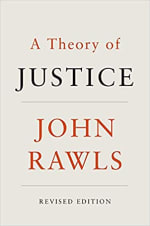

John Rawls (1921–2002) taught moral and political philosophy for many years at Harvard University. His 1971 A Theory of Justice (revised in 1999) was undoubtedly the most influential work of political theory in the analytical tradition during the second half of the twentieth century. It is best-known as the source of the classical Rawlsian idea that a just theory of government must be arrived at from behind a “veil of ignorance,” meaning that the author of the theory may not know what his own position would be within the society he is recommending.
2.Being and Time
By: Martin Heidegger, 1927
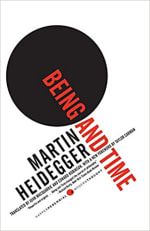

Martin Heidegger (1889–1976) is the highly controversial author of Sein und Zeit (Being and Time), which first appeared in 1927 while he was teaching philosophy at the University of Marburg. The work, which was first translated into English in 1962, has been reprinted and retranslated several times, most recently in 2010. A collaborator with the Nazi regime during World War II, Heidegger is nevertheless admired by thousands as the greatest philosopher of the twentieth century. It is incontrovertible that Being and Time, along with its signature themes of Dasein (human consciousness), Geworfenheit (“thrownness” of Dasein into the world), Sorge (care or concern of Dasein for certain ends that matter deeply to it), and many others, have had an incalculable impact on the development Continental philosophy, especially existentialism.
3.The Nicomachean Ethics
By: Aristotle, c. 340 BC
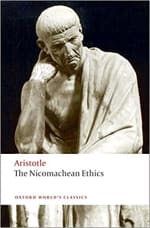

This is the main work in which Aristotle (384–322 BC) sets out his practical philosophy (theory of human action) and moral theory. The title comes from the book’s dedication to the author’s son, Nicomachus. Hugely influential in Antiquity and among the Arabs working in the Greek philosophical tradition (falsafa), the work was first made available in Latin in the thirteenth century. During the next four centuries, the book had an overwhelming impact, becoming the foundation for Christian moral philosophy. Aristotelian or “virtue” ethics then fell out of favor from the time of the Scientific Revolution until about the 1980s. However, it is undergoing a vigorous revival today. The leading idea of the Nicomachean Ethics—which now exists in very many English translations and editions—is that human nature defines the standard whereby human well-being (eudaimonia) may be judged, while a virtue (aretē) may be defined as a stable character trait that contributes to that well-being. Most of the book is taken up with a detailed discussion of the various virtues, how they contribute to well-being, and their hierarchical relations with each other.
4.Critique of Pure Reason
By: Immanuel Kant, 1781
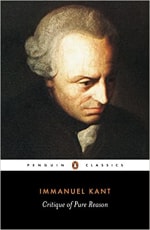

This landmark text represents a watershed in the history of European philosophy. Before Immanuel Kant (1724–1804), the two main contending streams of philosophy, rationalism and empiricism, were in agreement on the most fundamental point: the world and the knowing human subject both objectively exist and are subject to rational analysis. They only disagreed about whether the analysis of reality should proceed mainly a priori, through the exercise of reason alone (rationalism), or a posteriori, through observation and experiment involving the senses (empiricism). In the Critique of Pure Reason (which was published in a heavily revised second edition in 1787), Kant—who spent his entire career at the University of Königsberg (now Kaliningrad)—offered a synthesis of rationalism and empiricism. Specifically, he taught that all knowledge is ultimately a posteriori, but that it is necessarily interpreted by the pre-existing cognitive structures of the human mind as conforming to certain determinate a priori conceptual forms, such as three-dimensional space, time, and causation. Moreover, according to this doctrine, we find the world intelligible because we impose the structure of our own mind upon it. This represents a decisive break with the realism of traditional philosophy, which held that we find the world intelligible because our minds have been created, whether by nature or God, to conform to the world. For this reason, Kant may be considered the godfather of all modern schools of idealism, from historicism, pragmatism, and cultural relativism to phenomenology, deconstruction, critical theory, and similar doctrines.
5.Symposium
By: Plato, c. 380 BC


Plato (c. 428–347 BC) is often considered the greatest figure of the Western philosophical tradition. Alfred North Whitehead (see #14 below) famously said that that tradition consists of little more than a “series of footnotes to Plato.” Most of Plato’s surviving writings are dialogues featuring his teacher, Socrates (c. 470–399 BC). The doctrine for which Plato is most famous is the “theory of the forms,” that is, the idea that physical objects possess a second-rate form of existence as more-or-less imperfect approximations to the eternal and immutable “forms” (eidē, singular eidos), which are the primary and authentic existents transcending space and time. The Symposium (the Greek word means “banquet”) includes among its characters, in addition to Socrates, the comic playwright Aristophanes and the famous aristocrat and future general and politician, Alcibiades. The theme of the dialogue is the nature of love (eros). The Symposium is one of the most accessible and popular of Plato’s dialogues. It has been translated into English very many times and is available in numerous editions.
6.Metaphysics
By: Aristotle, c. 340 BC
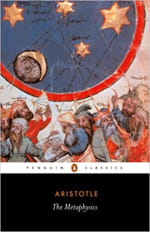

Aristotle (384–322 BC) was from the city of Stagira, which was then a part of the northern kingdom of Macedonia and is now in the Greek province of Thrace. He traveled to Athens as a young man in order to study with Plato (see #5 above). His writings, which are highly condensed and may in fact be student notes, cover almost all areas of philosophy. The Metaphysics contains Aristotle’s “first philosophy,” that is, his analysis of the most general and fundamental features of reality. Among the many topics covered in it, we may mention as holding special interest his penetrating discussions of being as such (“being qua being”), the various ways in which things may be said to exist (the “categories”), such basic features of reality as matter, form, change, actuality, and potentiality, and the four basic types of explanation for why change occurs (the “four causes”). The study of Aristotle is enormously rewarding intellectually, but it is not for the faint of heart.
7.Philosophical Investigations
By: Ludwig Wittgenstein, 1953
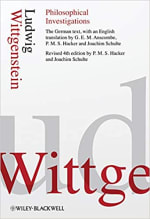

Ludwig Wittgenstein (1889–1951) was born in Austria but did his most important work at the University of Cambridge in the UK. He essentially wrote two books. First was the Tractatus Logico-Philosophicus (TLP) first published in German in 1921 and translated into English the following year. The TLP may be viewed as a contribution to the logical-empiricist program that was very popular at the time. Second was the Philosophische Untersuchungen (Philosophical Investigations), which was assembled posthumously from his manuscripts and first published in an English translation. In the second book—the one we are considering here—the author basically renounced the views expressed in the first one, thus necessitating a distinction between the “early” and the “late” Wittgenstein. The latter thinker views philosophy as an “illness” and the proper role of the philosopher as that of a “therapist” who attempts to cure the human intelligence of its “bewitchment” by language. Several later editions of the Philosophical Investigations have been published, in both English and German.
8.The Republic
By: Plato, c. 375 BC
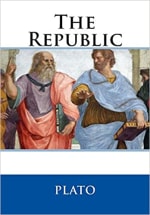

The Republic is one of Plato’s most important and most read dialogues. Its subject is the nature of justice and the best form of government. However, the dialogue also ranges widely across many of Plato’s other philosophical concerns, containing several of the philosopher’s most important texts dealing with the theory of “forms” (see #5 above), such as the analogies of the Sun, the Divided Line, and the Cave. In the latter, which is perhaps the most famous such example in the history of philosophy, Plato (through his mouthpiece, Socrates) invites us to imagine a group of individuals chained in an underground cavern in such a way that they are forced to look in one direction, at the walls of the cave. The only illumination comes from a fire burning behind them. People holding various carved figures pass between the fire and the prisoners’ backs, so that the figures cast shadows on the wall. Thus, the prisoners see only the shadows cast by the figures. Plato is telling us that we are like those prisoners. The objects we see around us in the physical world are like “shadows” cast by the eternal and immutable forms. The Republic exists in numerous English translations and editions.
9.The Conscious Mind: In Search of a Fundamental Theory
By: David J. Chalmers, 1996
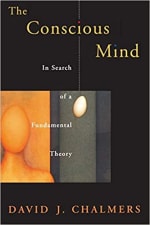

This book has proved to be something of a landmark in the recent discussion of the human mind and its relation to the brain/body (the “mind-body problem”). Writing at a high level of both empirical and analytical rigor, Chalmers (b. 1966) ranges widely over contemporary work in neurobiology, cognitive science, and philosophy of mind. He makes several crucial distinctions and argues that nothing we currently know about the brain or the mind lends any support at all to the belief that “consciousness” in the basic sense of subjectivity or phenomenal experience (as opposed to its functional role) can be explained in any reductive terms whatsoever. The author’s notion of subjectivity as the distinctive “hard problem” of consciousness has now become the standard way to frame the problem in analytical philosophy.
10.The Structure of Scientific Revolutions
By: Thomas S. Kuhn, 1962
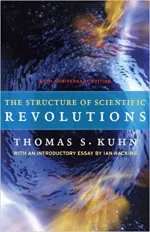

This book is not a work of philosophy strictly speaking. It is a work of history, philosophy, and sociology of science. However, some of the basic ideas advanced in it by the author have had a very strong influence on academic philosophy (especially, in its Continental form). In a nutshell, Kuhn (1922–1996) argues—primarily on the basis of actual science history—that scientific knowledge advances in what later became known as a “punctuated equilibrium” fashion. In other words, the majority of scientific work is undertaken within a particular theoretical framework. Kuhn calls this “normal science.” Only rarely is the framework itself called into question, overthrown, and replaced by a new one—a process the author refers to as “revolutionary science.” Much of the influence of Kuhn’s work has been due to his name for an accepted theoretical framework, namely, the term “paradigm.” This word has taken on a life of its own and is now regarded throughout the humanities (including much of philosophy) and the social sciences as “scientific proof” of the claims of epistemological relativism. (It should be noted that Kuhn himself later remarked, “I am not a ‘Kuhnian’!“) A heavily revised edition of Structure was published in 1970, and a Fiftieth-Anniversary Edition in 2012.
11.Timaeus
By: Plato, c. 360 BC
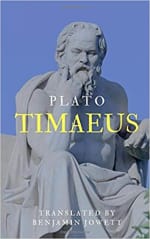

The Timaeus was one of Plato’s most-influential dialogues historically, because it was preserved and accessible throughout the Middle Ages. It is a long dialogue that covers many topics; however, its central topic is Plato’s “natural philosophy.” The character Timaeus—who is presented as a Pythagorean philosopher, though it is not certain such a person really existed—relates a story (muthos) about the creation of the universe, presenting it as merely “probable,” not certain. Among the many notable features of this story is the notion of the “Demiurge” (demiourgos), which is a sort of omnipotent divine intelligence, or Craftsman, who fashions the objects of the physical world on the pattern of the forms (see #5 above). As a Pythagorean, Timaeus emphasizes the mathematical structure underlying what he takes to be the fundamental forms of matter, namely, the five “regular solids”: the tetrahedron, cube, octahedron, dodecahedron, and icosahedron (whence the term “Platonic solids”). This dialogue, which is available in numerous translations and editions, also contains the original source of the myth of Atlantis.
12.Totality and Infinity: An Essay on Exteriority
By: Emmanuel Levinas, 1961
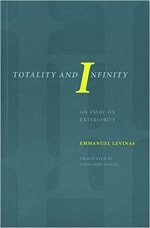

This book, which was first published in French as Totalité et infini: essai sur l’extériorité (translated into English in 1969), has been a highly influential contribution to Continental ethics. Levinas (1905–1995) was born into a middle-class Jewish family long-established in Lithuania (then a part of the Russian Empire). He received a portion of his university training at the University of Freiburg in Germany, where he studied with Edmund Husserl and Martin Heidegger. After settling in France and becoming a naturalized citizen in 1939, he joined the French army. His unit was captured by the Germans in 1940, and he spent the rest of the war interned in a German prisoner of war camp. After his release, Levinas discovered that he had lost much of his extended family in the Holocaust. The book under consideration—often considered his magnum opus—represents a radical attempt to rethink ethics as foundational to the rest of philosophy. In it, the author explores the basis of morality as lying in the recognition of the demand in the face of the Other (l’autre). Levinas’s work is also notable for its occasionally mordant quality, notably in his famous mediation on his camp experience in his 1963 collection, Difficile liberté (Difficult Freedom), in which he tells of a guard dog—a German shepherd named “Bobby”—who used to lick his hand when he would reach out to it through the barbed-wire. Levinas calls Bobby the “last Kantian in Nazi Germany.”
13.Technics and Time, 1: The Fault of Epimetheus
By: Bernard Stiegler, 1994


Stiegler (1952–2020) led a remarkable life. In 1978, at the age of 26, he was sentenced to five years’ imprisonment for armed robbery. While serving his sentence, he discovered philosophy, eventually entering into a correspondence with the philosopher and translator, Gérard Granel. (In 2003, Stiegler published a memoir, entitled Passer à l’acte, about this transformative experience.) His main philosophical work—which lies within the Continental tradition of Marxism, phenomenology, and hermeneutics—focused on the ontological, psychological, and socio-political implications of technology, particularly in its digital forms. The Technics and Time trilogy is usually considered to be his magnum opus. This volume was first published as La technique et le temps, 1: La faute d’Épiméthée in 1994, and the English translation was published in 1998. (Volume 2: La désorientation was published in 1996 and translated in 2009, while Volume 3: Le temps du cinéma et la question du mal-être was published in 2001, and translated to English in 2011.)
14.Process and Reality: An Essay in Cosmology
By: Alfred North Whitehead, 1929
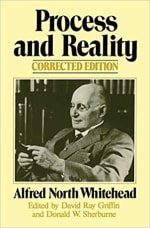

Whitehead (1861–1947) was originally trained in mathematics and made his reputation for his work with co-author Bertrand Russell on the formidable Principia Mathematica, published in three volumes between 1910 and 1913. Gradually, Whitehead shifted his main interest from math and logic to philosophy of science, and from there to general metaphysics. (This transformation was also marked by his move from Cambridge to Harvard University.) The book under consideration here represents the culmination of this process. Based on the prestigious Gifford Lectures for 1927–1928 (a posthumously published, Corrected Edition appeared in 1979), Process and Reality is an attempt to rethink the most fundamental categories of reality in terms of an ontology of pure process. In it, the author teaches that the elementary units of being (apart from God) are intrinsically temporal, in contrast to the classical ontology of “substances,” which endure through time in an inessential fashion. He calls these essentially temporal units “occasions of experience,” thus subscribing to a form of panpsychism. Whitehead’s greatest influence has been on the so-called “process theologians,” such as Charles Hartshorne, John B. Cobb, and David Ray Griffin. However, quite recently “process metaphysics” à la Whitehead has begun to attract attention from the mainstream analytical philosophy community, as well.
15.Hermeneutic Communism: From Heidegger to Marx
By: Gianni Vattimo and Santiago Zabala, 2014
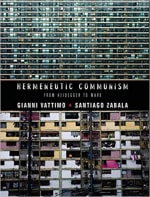

Though both Vattimo (b. 1936) and Zabala (b. 1975) are Italian, this book was originally written in English. Vattimo is best-known for advocating that philosophy abandon its traditional emphasis on truth in favor of what he calls pensiero debole (“weak thought”), which conceives of rationality as something closer to the arts. Zabala is famous for arguing that “the greatest emergency is the absence of emergency.” Together, in this work, they apply their hermeneutic and critical perspectives to politics, arguing against capitalism with its inherent reliance on the “violence” of truth, and in favor of hermeneutics as the proper way to theorize a “weaker” version of communism in order to achieve a Marxist-humanist form of anarchism.
16.Reading Capital
By: Louis Althusser and others, 1965
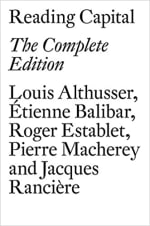

Althusser (1918–1990), a longtime member of the French Communist Party, was mentally unstable, spending many years in and out of psychiatric hospitals. In 1980, he strangled his wife to death—a crime for which he was found unfit to stand trial. Althusser is best-known as the principal contributor to this book, which was originally published with four co-authors—the philosopher Étienne Balibar, the sociologist Roger Establet, the philosopher Jacques Rancière, and the critic Pierre Macherey—as Lire le Capital. (An abridged English translation containing only Althusser’s contributions was published in 1970; an unabridged translation was published in 2015.) In his contributions, Althusser performs a close textual analysis on Karl Marx’s 1867 masterpiece of political economy, Das Kapital. He denounces the many latter-day revisionist historicist, idealist, and humanist versions of Marxist orthodoxy, and argues that the struggle for communist revolution can only be advanced by a Leninist intellectual vanguard which adheres to Marxism in its original “scientific” form.
17.Meditations
By: Marcus Aurelius, c. 167 AD
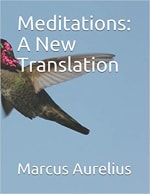

The Meditations consists of private notes that the Roman emperor Marcus Aurelius (121–180 AD; reigned from 161) composed for his own use, not for publication. Writing in koinē Greek in a personal style belying his high office, Marcus uses The Meditations as a means of reflecting upon two great themes: (1) his duty to analyze his own character and motives and those of other people; and (2) his duty to behave in conformity with the principles of nature. The latter duty derives from the central tenet of Stoic philosophy: peace of mind comes from understanding that everything comes from nature and must return to nature. The Meditations—which is one of the most-important (and most-accessible) texts representing Stoic ethics—is available in numerous English translations and editions.
18.The City of God, Against the Pagans
By: Saint Augustine, c. 426 AD
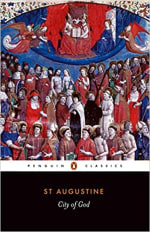

In 410 AD, the city of Rome was sacked by the Visigoths. With the Roman Empire (officially Christian since 380 AD) visibly crumbling, many pagans (those who continued to worship the Roman gods) accused the Christians of causing the Empire’s decline. Aurelius Augustinus (354–430 AD)—then the Bishop of Hippo (now Annaba, Algeria)—set out to refute such charges. He does so by presenting a broader perspective, portraying all human history as a struggle between the “Earthly City” (AKA the “City of Man”) and the “City of God.” This enormous work in 22 books covers a lot of ground, from Greek and Roman history, to philosophy, to biblical exegesis. Originally published as De civitate dei, contra paganos, The City of God has been published in several English translations, in two-, three-, or four-volume sets.
19.Thus Spoke Zarathustra: A Book for All and None
By: Friedrich Nietzsche, 1887


Nietzsche (1844–1900) regarded this book as his magnum opus—even going so far as to call it the greatest gift ever made to mankind! Its main character, Zarathustra (the semi-legendary author of Zend-Avesta, the ancient Persian holy book), is basically a mouthpiece for the author. The book recounts Zarathustra’s wanderings, meditations, and speeches. Among the best-known of these are the parable of the “death of God,” the prophecy of the coming of the Übermensch (“Superman”), and the doctrine of the “eternal recurrence of the same.” Another feature of the book is its denunciation of the supernatural orientation and morality of Christianity. Thus Spoke Zarathustra was originally published in three parts over a period of two years (a fourth part was added later), with the collective title of Also Sprach Zarathustra: Ein Buch für Alle und Keinen. It has been translated into English several times.
20.Physics
By: Aristotle, c. 350 BC
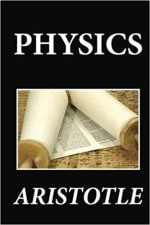

The Physics is Aristotle’s systematic investigation of the most basic principles underlying nature. (On Aristotle’s background, see #6 above.) The book focuses on such phenomena as time, space, change, and causation. (Note that there is some overlap between Physics and Metaphysics—see #6 above.) It also contains discussion of certain distinctive superseded empirical doctrines, such as the impetus theory of projectile motion and the doctrine of the “natural place” of the five “elements” (air, earth, fire, water, and quintessence). However, the bulk of the discussion in Physics is purely conceptual in nature and so is of enduring interest. The book exists in many English translations and editions.
21.Mind and Cosmos: Why the Materialist Neo-Darwinian Conception of Nature is Almost Certainly False
By: Thomas Nagel, 2012


With such books as Mortal Questions (1979), The View from Nowhere (1986), and The Last Word (1997), Thomas Nagel (b. 1937) vaulted to his erstwhile position among the foremost contemporary Anglophone analytical philosophers. While maintaining a strong commitment to the importance of rationality, objectivity, and truth, Nagel nevertheless led the way in asserting the reality of subjective experience with his groundbreaking, much-anthologized article, “What Is It Like to Be a Bat?” (reprinted in Mortal Questions)—which was a dagger thrust into the heart of the old behaviorism still lingering in analytical philosophy of mind. For this reason, the publication of Mind and Cosmos in 2012 should not have come as the surprise that it did. Arguing that reductionist-materialism is in principle incapable of explaining the facts about human consciousness and rationality—and, more specifically, by calling out the petition at the heart of the Darwinian explanatory schema—Nagel unleashed upon himself an unprecedented tsunami of vituperation and character assassination at the hands of the self-appointed guardians of philosophical and scientific orthodoxy.
22.The Prince
By: Niccolò Machiavelli, 1532
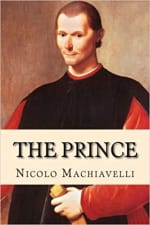

During the late medieval and Renaissance periods, there arose a new genre of philosophical writing known as “Mirror for Princes” (specula principum), which were intended to instruct royalty, both young and old, about the duties incumbent upon their high office. In one sense, The Prince is simply the contribution of Machiavelli (1469–1527) to this genre. However, his book was strikingly innovative in several ways. For one thing, he provided for its posthumous publication in Italian (as Il Principe), as opposed to Latin. For another, the book rejects the moralizing, explicitly Christian tone of most earlier Mirrors, in favor of a detached, practical, and realistic attitude towards the genuine motives of powerful men and the relations among political factions within a state, as well as the economic rivalries and warfare among states. The author originally wrote his magnum opus in Latin in 1513 and circulated it privately in manuscript. Today, The Prince may be read in numerous different English translations and editions.
23.A Thousand Plateaus: Capitalism and Schizophrenia
By: Gilles Deleuze and Félix Guattari, 1980
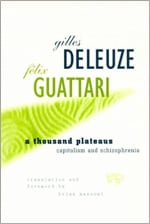

Originally published as Mille plateaux, and first translated to English in 1987, this volume is one of the major works of Gilles Deleuze (1925–1995), often considered to be one of the leading figures in contemporary French and Continental philosophy. It is paired with the earlier L’anti-Œdipe (1972) under the collective title of Capitalisme et schizophrénie (whence the subtitle of the English version of Mille plateaux). In this volume, Deleuze and his co-author, the psychotherapist Félix Guattari (1930–1992), present a revisionist history of modernity from a synthetic Marxist and Freudian perspective. In so doing, they allegedly unveil the overriding historical force of “desiring-production”—a sort of combination of Freudian unconscious drives and Marxist labor theory of value—which produces a suite of complex historical systems the authors term “plateaus.” Our contemporary plateau consists of the neurotic and sexually repressed modern individual manipulated by a capitalist system of infantile commodification continuously homogenized and controlled by the bureaucratic nation state.
24.The Phenomenology of Spirit
By: Georg Wilhelm Friedrich Hegel, 1807


Hegel (1770–1831) was the most important of the German philosophers immediately reacting to Kant. He is the chief architect of the system of philosophy known as “objective idealism,” which he develops in the form of a “spirit” (a principle of reason or intelligibility) that permeates the universe and part of whose essential nature is to express itself through concrete social groupings in particular times and places, and thus to undergo a historical development. The present work was his first effort to explain this system. Among this book’s many path-breaking ideas and formulations—which glisten like gems among much impenetrable obscurity—is the idea that individual human reason is itself fundamentally social in character. That is, the transition from the “I” of subjectivity to the “he” and the “it” of objective spirit passes by way of the “we” of historical-social group, as the individual, in learning to look at himself from the outside, achieves self-consciousness. The Hegelian “dialectical logic” of thesis-antithesis-synthesis was also introduced in this work. Originally published as Die Phänomenologie des Geistes, and first put into English in 1910, this pioneering, but exceedingly difficult work is now available in numerous translations and editions.
25.The Consolation of Philosophy
By: Boëthius, c. 523 AD
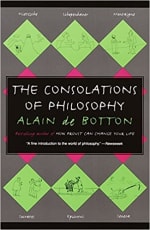

Anicius Manlius Severinus Boëthius (c. 477–524 AD) was both a philosopher and a high Roman imperial official. He is an important link between ancient Greek philosophy and the later philosophy of the Scholastic period on account of his Latin translations of several logical texts in the Aristotelian tradition. As a Christian, he also wrote several theological treatises that were commented on by Thomas Aquinas. However, the present book, which owes more to Neoplatonic than to Christian philosophy, is far and away his most important work. It was written during the reign of the Ostrogoth emperor Theodoric after the author fell from power, while he was in prison awaiting trial and eventual execution, likely for denouncing corruption at court. Written in the form of Menippean satire (with alternating passages of prose and poetry), the De consolatione philosophiae is a dialogue between Boëthius and a Lady personifying Philosophy on the reunion of the individual human soul with God. It was read and admired throughout the Middle Ages. Now available in numerous English translations and editions, it still finds passionate readers looking for consolation during adversity.
***
Now that you know what books to check out, consider a deep dive with a look at The Best Colleges & Universities for a Bachelor’s in Philosophy.
For additional study tips and tools, check out our full library of study guides for students.
Or find study tips, learning tools, tips for campus life and much more with a look at our Student Resources Headquarters.